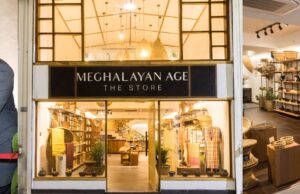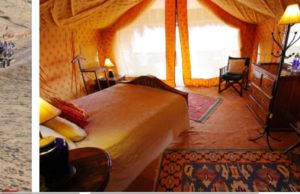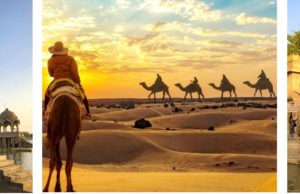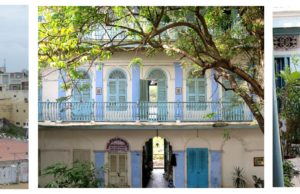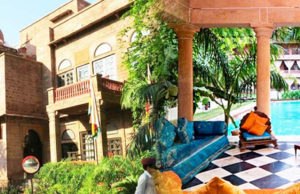
WoT's Hot
I saw the Maestro perform for the first and last time many years ago in Kolkata. Kelucharan Mohapatra was the boatman, rowing Ram, Lakshman and Sita across the river on their way to Ram’s 14 years of banishment from Ayodhya to the forests of Dandakayan. It was as if the dancer had transformed himself as the boatman, blessed with the good fortune of rowing across the river THE ONE who is believed by all believers to row the boat of life. He was humbleness personified, he cajoled, he begged, he pleaded; for the two hours of the opera he mesmerized all of us who were there. That evening I cried, realizing for the first time that dance too, could like good music set the tear ducts flowing. Soon after Kelucharan Mohapatra died and I realized I was fortunate to have witnessed a superlative performer in one of his last performances.
I had heard he had been born in Raghurajpur in Odisha and was originally a Gutipoa dancer. I managed to visit the village only last years; not just because it was Kelucharan Mohapatra’s birth place; it was, but also because it is synonymous with a host of craft Odisha is famous for; which I wanted to experience for myself in their original habitat.
Just 14 kms from Puri, Raghurajpur is just off Chandanpur on NH-316 which connects Puri to Bhubeneswar. It is quite amazing and little bit incredulous when you think that this small slip of land amidst palm and coconut tree – you could run the length of the village in 7 minutes flat and you don’t have to be a Usain Bolt to do that - is the abode of so many art, craft and dance forms. It is as if the soil here breeds creativity. There are stone sculptures - red sandstone and slate edifices from the temples of Odisha, ganjifa cards, traditional masks, papier mache craft, wooden toys and palm leaf engravings. But most importantly Raghurajpur is the home of the traditional Pat paintings of Odisha – (as in ‘pot’) and the Gutipoa; an ancient dance form and the precursor to the Odissi.
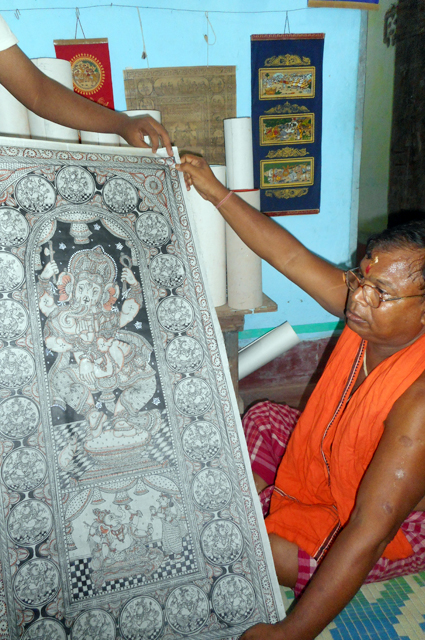
In the year 2,000, INTACH took the village under its wing as a heritage craft village. A community craft center developed here under its aegis where craftsmen work and there is a showroom of sorts; but frankly the work produced is mediocre; for the genuine craft prowl the village homes. About 100 odd, home-cum-studios line the only road on both sides while down the middle are the temples dedicated to various Hindu Gods. In spite of INTACH’s intervention, it’s a ‘dog-eat-dog’ situation here for the artisans, with touts haranguing tourists to buy from them. If you can over-look this irritant you could find some real treasures here.
Pat painting as an art form is said to date back to 5th BC. Like the Pichwais of Nathduwara, Pats are religious paintings and are placed under the throne of the Lord Jagannath at his temple in Puri and on the three chariots during the Rath Yatra held annually in the month of Ashdar - monsoon (June-July). The paintings are done on cloth (Patta); the base is first treated with a mixture of chalk and gum and painted over intricately in vibrant colors with images of Gods, Goddesses, and mythology.
The art has been adapted to palm leaf engraving, which I found more intriguing as the designs are delicately cut into the leaf in lace-like creations. Often they are layered and you have to open the cutouts to see what is below, adding an interactive dimension to the craft. Both types are plentiful at Raghurajpur; here you will also find Pat motifs on other surfaces as well, like coconut, bettlenut, wooden toys including painted bottles in the pat style which you could use as they are or adapt further as a lamp base. I bought one for the very purpose. But nothing to beat a traditional Pat made by a master craftsman and quite a few of them have made this village their home. Once again when it comes to Indian handicraft, I am reduced to the clichéd ‘exquisite’. Though the craftsmanship remains, use of modern colors has definitely taken the luster away from the art and you realize that when some enthusiast reveals some of the older pats in their collection (50 to 100 years old); the richness of the natural dye cannot be ignored.
But what about the Maestro? You ask. He was born here in the home of a traditional pat painter. And like other young lads of the area, in his adolescence he was a Gotipua dancer from where he graduated to Odissi. In the Gotipua the male dancers (young boys) dress and emote as women; it explains Kelucharan’s feminine grace as a dancer. I ask about his home or any remaining family, and was pointed to an over grown dilapidated brick structure – more a rubble than a home - and a rusty tin board that proclaimed that the renowned Padma Vibhusan, Kelucharan Mohapatra lived here once upon a time.
The circle was complete; the boatman had rowed the last ferry safely to shore. I turned to head back to Puri, on the way out picking up an antique Pat of dancing Shiva from one of the artisans right at the entrance of the village; the price was a song… in this case, perhaps a dance…
I saw the Maestro perform for the first and last time many years ago in Kolkata. Kelucharan Mohapatra was the boatman, rowing Ram, Lakshman and Sita across the river on their way to Ram’s 14 years of banishment from Ayodhya to the forests of Dandakayan. It was as if the dancer had transformed himself as the boatman
Other Articles in India
What to read next
Featured articles

Welcome Festive Season in Glam, Latin Quarters Launches new #PujoBling Collection with Monami Ghosh
by WOT




































